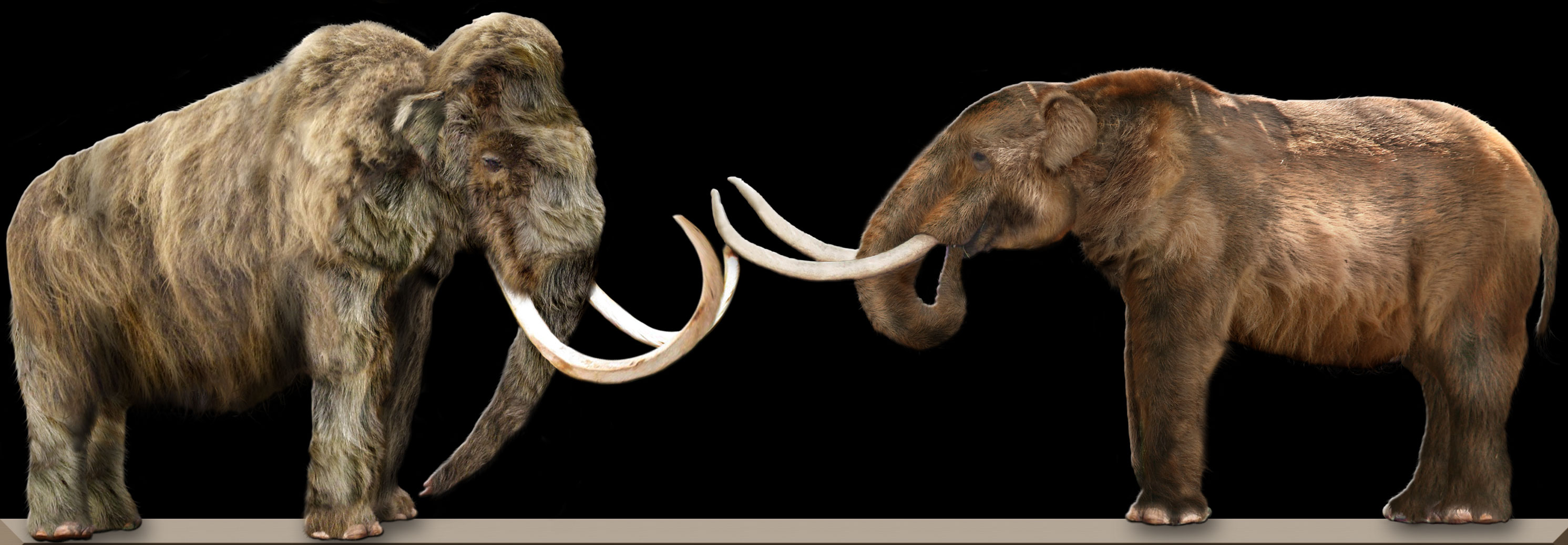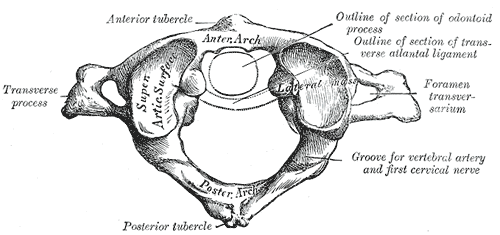|
Notiomastodon
''Notiomastodon'' is an extinct proboscidean genus of gomphotheres (a distant relative to modern elephants) endemic to South America from the Pleistocene to the beginning of the Holocene. ''Notiomastodon'' specimens reached a size similar to that of the modern Asian elephant. Like other brevirostrine gomphotheres such as ''Cuvieronius'' and '' Stegomastodon'', ''Notiomastodon'' was characterized by its short snout and tall, highly arched skull. The short jaw was due to the loss of the lower tusks found in more primitive gomphotheres. ''Notiomastodon'' was a generalist feeder capable of consuming various types of plants, which varied according to local environments. In the course of the last glacial period, there was an adaptation towards the consumption of grasses. The genus was originally named in 1929, and has been controversial in the course of taxonomic history as it has frequently been confused with or synonymized with forms called ''Haplomastodon'' and ''Stegomastodon''. Ex ... [...More Info...] [...Related Items...] OR: [Wikipedia] [Google] [Baidu] |
Gomphothere Teeth South America Cuvier 1806
Gomphotheres are any members of the diverse, extinct taxonomic family Gomphotheriidae. Gomphotheres were elephant-like proboscideans, but do not belong to the family Elephantidae. They were widespread across Afro-Eurasia and North America during the Miocene and Pliocene epochs and dispersed into South America during the Pleistocene following the Great American Interchange. Gomphotheriidae in its broadest sense is probably paraphyletic with respect to Elephantidae, which contains modern elephants. While most famous forms such as ''Gomphotherium'' had long lower jaws with tusks, which is the ancestral condition for the group, after these forms became extinct, the surviving gomphotheres had short jaws with either vestigial or no lower tusks (brevirostrine), looking very similar to modern elephants, an example of parallel evolution. By the end of the Early Pleistocene, gomphotheres became extinct in Afro-Eurasia, with the last two genera, ''Cuvieronius'' persisting in southern Nort ... [...More Info...] [...Related Items...] OR: [Wikipedia] [Google] [Baidu] |
Gomphothere
Gomphotheres are any members of the diverse, extinct taxonomic family Gomphotheriidae. Gomphotheres were elephant-like proboscideans, but do not belong to the family Elephantidae. They were widespread across Afro-Eurasia and North America during the Miocene and Pliocene epochs and dispersed into South America during the Pleistocene following the Great American Interchange. Gomphotheriidae in its broadest sense is probably paraphyletic with respect to Elephantidae, which contains modern elephants. While most famous forms such as '' Gomphotherium'' had long lower jaws with tusks, which is the ancestral condition for the group, after these forms became extinct, the surviving gomphotheres had short jaws with either vestigial or no lower tusks (brevirostrine), looking very similar to modern elephants, an example of parallel evolution. By the end of the Early Pleistocene, gomphotheres became extinct in Afro-Eurasia, with the last two genera, '' Cuvieronius'' persisting in southern ... [...More Info...] [...Related Items...] OR: [Wikipedia] [Google] [Baidu] |
Stegomastodon And Notiomastodon Skeletals
''Stegomastodon'' ('roof breast tooth') is an extinct genus of gomphotheres, a family of proboscideans. It ranged throughout North America from the early Blancan ~4 Ma, to the early Irvingtonian (~1.2 Ma). The South American species have been synonymized with '' Notiomastodon platensis''. Species The following definite species have been described:''Stegomastodon'' at .org * ''S. aftoniae'' * ''S. mirificus'' * ''S. nebrascensis'' * ''S. primitivus'' ''S. waringi'' is considered synonymous with ''S. platensis''. A dispute now exists over whether ''S. platensis'' should remain within the North and Central American genus ''Stegomastodon'' or should be moved over to the ... [...More Info...] [...Related Items...] OR: [Wikipedia] [Google] [Baidu] |
Stegomastodon
''Stegomastodon'' ('roof breast tooth') is an extinct genus of gomphotheres, a family of proboscideans. It ranged throughout North America from the early Blancan ~4 Ma, to the early Irvingtonian (~1.2 Ma). The South American species have been synonymized with '' Notiomastodon platensis''. Species The following definite species have been described:''Stegomastodon'' at .org * ''S. aftoniae'' * ''S. mirificus'' * ''S. nebrascensis'' * ''S. primitivus'' ''S. waringi'' is considered synonymous with ''S. platensis''. A dispute now exists over whether ''S. platensis'' should remain within the North and Central American genus ''Stegomastodon'' or should be moved over to ... [...More Info...] [...Related Items...] OR: [Wikipedia] [Google] [Baidu] |
Stegomastodon Waringi
''Stegomastodon'' ('roof breast tooth') is an extinct genus of gomphotheres, a family of proboscideans. It ranged throughout North America from the early Blancan ~4 Ma, to the early Irvingtonian (~1.2 Ma). The South American species have been synonymized with '' Notiomastodon platensis''. Species The following definite species have been described:''Stegomastodon'' at .org * ''S. aftoniae'' * ''S. mirificus'' * ''S. nebrascensis'' * ''S. primitivus'' ''S. waringi'' is considered synonymous with ''S. platensis''. A dispute now exists over whether ''S. platensis'' should remain within the North and Central American genus ''Stegomastodon'' or should be moved over to the ... [...More Info...] [...Related Items...] OR: [Wikipedia] [Google] [Baidu] |
Cuvieronius
''Cuvieronius'' is an extinct New World genus of gomphothere, named after the French naturalist Georges Cuvier. Alive, specimens typically stood about tall at the shoulder, weighed about and would have superficially resembled a modern elephant with spiral-shaped tusks. Taxonomy The species now known as ''Cuvieronius hyodon'' was among the first fossil animals from the New World to be studied. The first remains of this species were recovered from Ecuador by Alexander von Humboldt, at a location the local population referred to as the "Field of Giants".Mayor, A. (2005). Fossil legends of the first Americans. Princeton University Press. Humboldt recognized that, rather than being bones of giant humans as had been thought by the local population and previous Spanish colonists, they were similar to the giant elephants (''Mastodon'') being described from Ohio. Humboldt sent teeth that he had collected from Mexico, Ecuador, and Chile to French anatomist Georges Cuvier, who classifie ... [...More Info...] [...Related Items...] OR: [Wikipedia] [Google] [Baidu] |
Proboscidea
The Proboscidea (; , ) are a taxonomic order of afrotherian mammals containing one living family ( Elephantidae) and several extinct families. First described by J. Illiger in 1811, it encompasses the elephants and their close relatives. From the mid-Miocene onwards, most proboscideans were very large. The largest land mammal of all time may have been a proboscidean; '' Palaeoloxodon namadicus'' was up to at the shoulder and may have weighed up to , almost double the weight of some sauropods like '' Diplodocus carnegii''. The largest extant proboscidean is the African bush elephant, with a record of size of at the shoulder and . In addition to their enormous size, later proboscideans are distinguished by tusks and long, muscular trunks, which were less developed or absent in early proboscideans. Three species of elephant are currently recognised: the African bush elephant, the African forest elephant, and the Asian elephant. Elephantidae is the only surviving family o ... [...More Info...] [...Related Items...] OR: [Wikipedia] [Google] [Baidu] |
George Gaylord Simpson
George Gaylord Simpson (June 16, 1902 – October 6, 1984) was an American paleontologist. Simpson was perhaps the most influential paleontologist of the twentieth century, and a major participant in the modern synthesis, contributing '' Tempo and Mode in Evolution'' (1944), ''The Meaning of Evolution'' (1949) and ''The Major Features of Evolution'' (1953). He was an expert on extinct mammals and their intercontinental migrations. Simpson was extraordinarily knowledgeable about Mesozoic fossil mammals and fossil mammals of North and South America. He anticipated such concepts as punctuated equilibrium (in ''Tempo and Mode'') and dispelled the myth that the evolution of the horse was a linear process culminating in the modern '' Equus caballus''. He coined the word '' hypodigm'' in 1940, and published extensively on the taxonomy of fossil and extant mammals. Simpson was influentially, and incorrectly, opposed to Alfred Wegener's theory of continental drift, but accepted the ... [...More Info...] [...Related Items...] OR: [Wikipedia] [Google] [Baidu] |
Axis (anatomy)
In anatomy, the axis (from Latin ''axis'', "axle") or epistropheus is the second cervical vertebra (C2) of the spine, immediately inferior to the atlas, upon which the head rests. The axis' defining feature is its strong odontoid process (bony protrusion) known as the dens, which rises dorsally from the rest of the bone. Structure The body is deeper in front or in the back and is prolonged downward anteriorly to overlap the upper and front part of the third vertebra. It presents a median longitudinal ridge in front, separating two lateral depressions for the attachment of the longus colli muscles. Odontoid Process of Axis (Dens) The dens, also called the odontoid process or the peg, is the most pronounced projecting feature of the axis. The dens exhibits a slight constriction where it joins the main body of the vertebra. The condition where the dens is separated from the body of the axis is called ''os odontoideum'' and may cause nerve and circulation compression syndrom ... [...More Info...] [...Related Items...] OR: [Wikipedia] [Google] [Baidu] |
Atlas (anatomy)
In anatomy, the atlas (C1) is the most superior (first) cervical vertebra of the spine and is located in the neck. It is named for Atlas of Greek mythology because, just as Atlas supported the globe, it supports the entire head. The atlas is the topmost vertebra and, with the axis (the vertebra below it), forms the joint connecting the skull and spine. The atlas and axis are specialized to allow a greater range of motion than normal vertebrae. They are responsible for the nodding and rotation movements of the head. The atlanto-occipital joint allows the head to nod up and down on the vertebral column. The dens acts as a pivot that allows the atlas and attached head to rotate on the axis, side to side. The atlas's chief peculiarity is that it has no body. It is ring-like and consists of an anterior and a posterior arch and two lateral masses. The atlas and axis are important neurologically because the brainstem extends down to the axis. Structure Anterior arch The a ... [...More Info...] [...Related Items...] OR: [Wikipedia] [Google] [Baidu] |
Paraná River
The Paraná River ( es, Río Paraná, links=no , pt, Rio Paraná, gn, Ysyry Parana) is a river in south-central South America, running through Brazil, Paraguay, and Argentina for some ."Parana River". Encyclopædia Britannica. Encyclopædia Britannica Online. Encyclopædia Britannica Inc., 2012. Web. 26 May. 2012 . "Rio de la Plata". Encyclopædia Britannica. Encyclopædia Britannica Online. Encyclopædia Britannica Inc., 2012. Web. 26 May. 2012 Among South American rivers, it is second in length only to the Amazon River. It merges with the Paraguay River and then farther downstream with the Uruguay River to form the Río de la Plata and empties into the Atlantic Ocean. The first European to go up the Paraná River was the Venetian explorer Sebastian Cabot, in 1526, while working for Spain. A drought hit the river in 2021, causing a 77-year low. Etymology In eastern South America there is "an immense number of river names containing the element ''para-'' or ''parana-''" ... [...More Info...] [...Related Items...] OR: [Wikipedia] [Google] [Baidu] |
Bahia
Bahia ( , , ; meaning "bay") is one of the 26 states of Brazil, located in the Northeast Region of the country. It is the fourth-largest Brazilian state by population (after São Paulo, Minas Gerais, and Rio de Janeiro) and the 5th-largest by area. Bahia's capital is the city of Salvador (formerly known as "Cidade do São Salvador da Bahia de Todos os Santos", literally "City of the Saint Savior of the Bay of All the Saints"), on a spit of land separating the Bay of All Saints from the Atlantic. Once a monarchial stronghold dominated by agricultural, slaving, and ranching interests, Bahia is now a predominantly working-class industrial and agricultural state. The state is home to 7% of the Brazilian population and produces 4.2% of the country's GDP. Name The name of the state derives from the earlier captaincy of Bahia de Todos os Santos, named for Bay of All Saints (' in modern Portuguese), a major feature of its coastline. The bay itself was named by the explorer ... [...More Info...] [...Related Items...] OR: [Wikipedia] [Google] [Baidu] |






